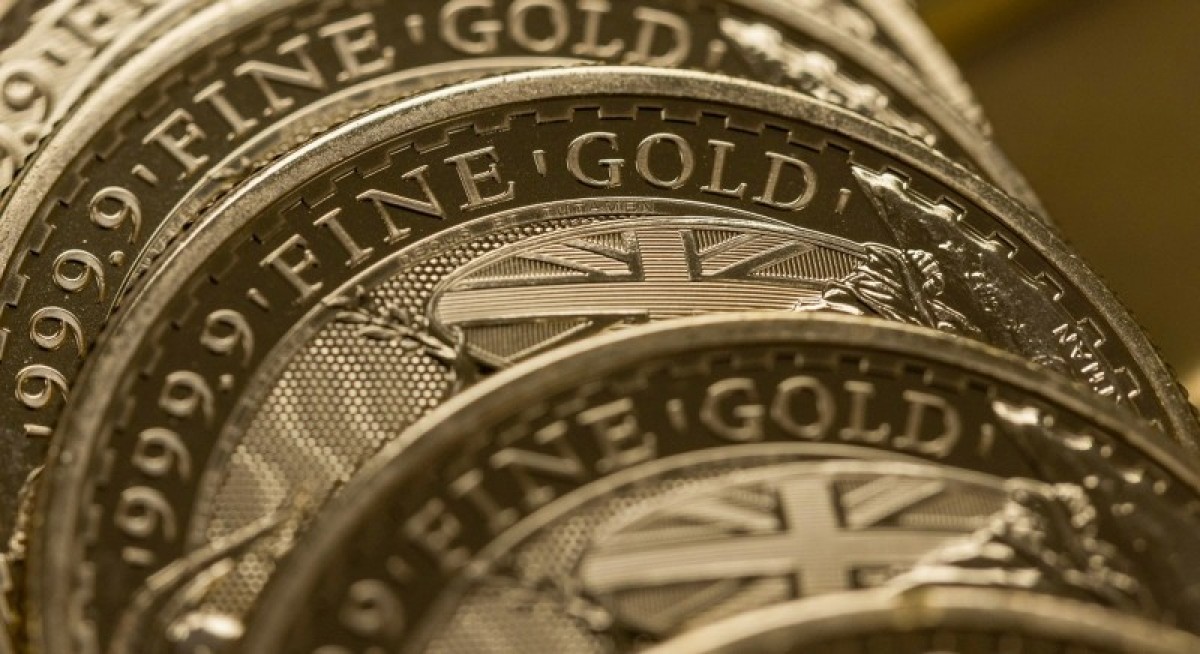"In a scenario where already strong central bank demand is joined by strong global investment demand, gold prices could easily move much higher to generate the increase in recycled supply and destruction of jewellery demand necessary to balance the market. Mine supply cannot respond quickly, even at much higher prices. Despite already record-high prices, mine supply is basically flat at 2018 levels," writes Luke in an April 22 note.
Gold at US$5,000 per ounce by the end of the decade did not feel like an outlandish scenario 12 months ago. It feels frankly conservative now, says Luke.
How high could gold go? Since finally "breaking out" in early 2024, gold prices have rallied by over US$1,000/ounce, notes Luke. "Gold has had a particularly good run recently through 1Q2025, with prices reaching US$3,150/ounce in early April."
Shift to multipolarity
See also: Gold hits US$3,500 as Trump's Fed broadside sparks flight to haven
Many have believed that long-run global geopolitical and fiscal trends have the potential to drive a very powerful bull market in gold, says Luke.
"Geopolitically, the world has been moving from a globalising 'Washington consensus' towards multi-polarity and great power rivalry for some time. Fiscally, very high sovereign debt and long-run untenable domestic deficits (in the US, in parts of Europe and in China) are a potent cocktail that history tells us usually ends in currency debasement, inflation and fiscal dominance," he adds.
According to Luke, these trends already hold the potential to create a situation where multiple pockets of global capital attempt to acquire gold as a "safe" monetary metal. However, the gold market is "simply not large enough" to absorb such a simultaneous global bid without much higher prices, writes Luke. "Trump is accelerating and super-charging the potential for that simultaneous global bid."
See also: Lion Global launches Singapore’s first physical gold fund with min. investment amount of $1
Stagflation supports gold
Schroders' economists place the impact of "Liberation Day" tariffs on US inflation at 2% with a hit to growth of almost 1%, before accounting for any retaliatory tariffs. Stagflation can be painful for risk assets but tends to be very supportive for gold, says Luke.
The bigger picture is "potentially much more seismic", says Luke. "By proposing heavy tariffs based on the size of deficits (not actual trade barriers), Trump is making it clear that the US wants not free trade but balanced trade."
This rejection of deficits is the starkest rejection yet of globalisation, says Luke. It can also be interpreted as a rejection of the US dollar-centric global monetary regime, in place since the end of Bretton Woods in 1971.
Since then, the US dollar has acted as the primary global reserve currency, dominating official reserves and dominating international trade and finance, far beyond the US share of global GDP. It has underpinned an open and rules-based global trading system, complemented by steadfast geopolitical alliances, says Luke.
"One of the largest effects of this dollar standard status quo has been the recycling of dollar revenue into US dollar assets, mainly Treasuries, which are seen as 'safe' assets and the bedrock of the global financial system," he adds.
To stay ahead of Singapore and the region’s corporate and economic trends, click here for Latest Section
Foreign holdings of US equity and private credit assets are also enormous. This cumulative flow now leaves the US with a net international investment position of a negative US$26 trillion, says Luke. Trump himself quoted this in his April 2 address.
"It does not take a Nobel Prize in economics to work out that the current tariff-based assault on the global trading system might, in turn, lead to significant repatriation flows amid a questioning of just how 'safe' dollar assets now are or how bright the relative US economic outlook is," says Luke. "With such a dearth of credible alternatives, expecting gold to be a major beneficiary of such a repatriation trend is common sense to us."
What does this mean for gold equities?
Luke thinks current prices for gold equities are "very likely to translate into the largest growth in earnings and free cash flow of any sector in the broad equity market".
Despite this, investors have, on aggregate, responded by selling passive exposure to the gold equity sector "at the fastest rate we can see on record", says Luke. "In 1Q2025 alone, US$2.4 billion has been liquidated from passive products. To us, this is astonishing and very bullish from a sentiment perspective."
No other major commodity is anywhere near its all-time real high, let alone above it, notes Luke. This is because gold is rallying as a monetary asset, not as a commodity asset, he adds.
"The rest of the commodity complex (for example: diesel, steel, fossil fuel-derived consumables) is a big driver of gold producers' operating and capital costs. Cost inflation from these areas, and from labour, is far more limited than in 2021/2022," says Luke. "With gold prices at record highs, this translates into record profit margins for gold producers."
Charts: Schroders




